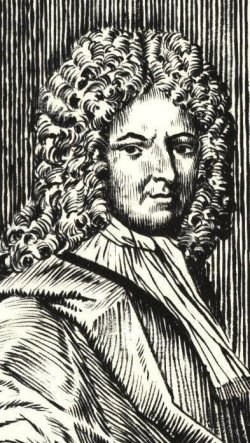NEWS RELEASE
BOSTON PUBLIC LIBRARY
**************************
Exhibit explores rise of pop culture in 18th-Century London libraries
A new exhibit of rare books at the Boston Public Library (BPL) highlights one of the earliest rises in pop culture in London with pamphlets, broadsides, and rare books telling stories of criminals, ghost, shipwrecks, and pirates.
University of Massachusetts Boston faculty and graduate students worked with BPL rare book curators to organize a first of its kind exhibit, "Crooks, Rogues, and Maids Less Than Virtuous," which will open on December 12 and show through May 1.
The exhibit is the first collaboration for UMass Boston and the Boston Public Library.
"Through partnership with the Boston Public Library, we were able to access rare treasures," says UMass Boston English professor Cheryl Nixon, project leader. "We were able to witness first-hand materials directly from the early streets of London's pop culture — a pop culture built around literature."
The exhibit includes articles from the first newspapers in London, which blur the lines of fact and faction with stories of Atlantis, miraculous births, and the supernatural.
It also includes "true life" stories of famed criminals, highwaymen, and female pickpockets.
The materials were gathered from the riches of the Boston Public Library's Trent Collection of Defoe and Defoieana.
Daniel Defoe, writer of Robinson Crusoe and Moll Flanders, is considered to be one of the inventors of the English novel.
"One of our most popular forms of literature — the novel - was born in the streets of eighteenth-century London," says Nixon.
With an explosion of "cheap print" materials, more and more people had access to literature, were learning how to read, and were thirsting for stories beyond the facts of the day, explains Nixon.
"Readers of 300 years ago were fascinated with opinion, gossip, and scandal," she says.
A long-time scholar of archival material, Nixon worked closely with the BPL's Earle Havens, acting keeper of rare books and manuscripts, to create a graduate-level class for students to work hands-on with archival material in the rare books room and to create their own exhibit based on what they found.
Students examined more than 150 pieces, which will be displayed in four cases in the Cheverus Room in BPL's McKim Building.
"We hope to continue to work on projects between these two great urban institutions, both of which are committed to public education," says Nixon of her collaboration with Havens. "We plan to provide more education about and wider access to these wonderful rare book materials."
The graduate students, 13 in all, eight of whom are teachers of middle and high school students in the Greater Boston area, explored four themes in selecting their materials: concepts of literacy, the idea of "news," the lure of crooks and highwayman, and the rise of the novel.
Nixon's love of archival research comes from her own digging in London's Court of Chancery records.
An eighteenth-century specialist in literature, Nixon has created a comprehensive survey linking the novelistic orphan and surrogate family with British court cases.
She has also brought previous classes to the Massachusetts Archives to research manuscripts in its collection of colonial and early state materials, which include records on witchcraft trials, Indian affairs, sea security, and the archives of Plymouth County.
The exhibit was made possible by support from the Boston Public Library, the Boston Public Library Foundation, and UMass Boston’s Chancellor’s Office, College of Liberal Arts, and Office of University Advancement.
President Bernard Margolis of the Boston Public Library, Chancellor Michael F. Collins, MD, members of the Boston Public Library Foundation and Board of Trustees, Professor Nixon and her class celebrated the opening of the exhibit on tonight in the Abbey Room of the Boston Public Library, McKim Building.
Established in 1964, UMass Boston prides itself on providing challenging teaching, distinguished research, and extensive public service to Boston and the Commonwealth.
Through its six colleges — Liberal Arts, Science and Mathematics, Management, Nursing and Health Sciences, Public and Community Service and Graduate College of Education – the McCormack Graduate School of Policy Studies, and the Division of Corporate, Continuing, and Distance Education, UMass Boston offers undergraduate and graduate study in more than 150 fields.
For more information, please see UMB.edu
For more than 150 years, the Boston Public Library has pioneered public library service in America with revolutionary ideas and famous firsts.
Established in 1848, the BPL was the first publicly supported municipal library in America, the first public library to lend books, the first to have a branch library and the first to have a children's room.
Today, the BPL boasts 27 neighborhood branches, free Internet access, two unique restaurants, an award-winning website BPL.org and an online store featuring reproductions of the BPL's priceless photographs and artwork.
Each year, the BPL hosts nearly 5,000 programs, answers more than one million reference questions and serves millions of people in its National Historic Landmark McKim Building in Copley Square.
***************************
Join SooToday+
- Messages
- Post a Listing
- Your Listings
- Your Profile
- Your Subscriptions
- Your Likes
- Your Business
- Support Local News
- Payment History
SooToday+ members
Already a +member?
Not a +member?
Sign up for a SooToday+ account for instant access to upcoming contests, local offers, auctions and so much more.
